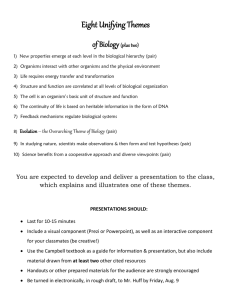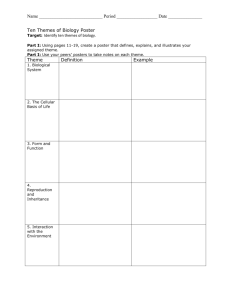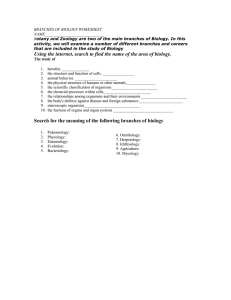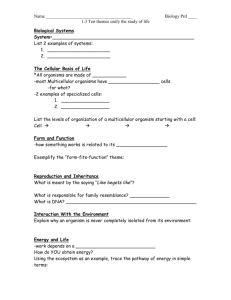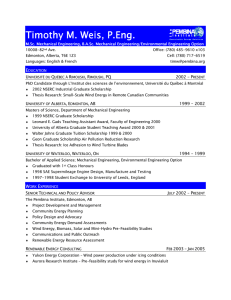Honors Biology Fall Final Study Guide 2015 Ms. Weis Biology 250
advertisement
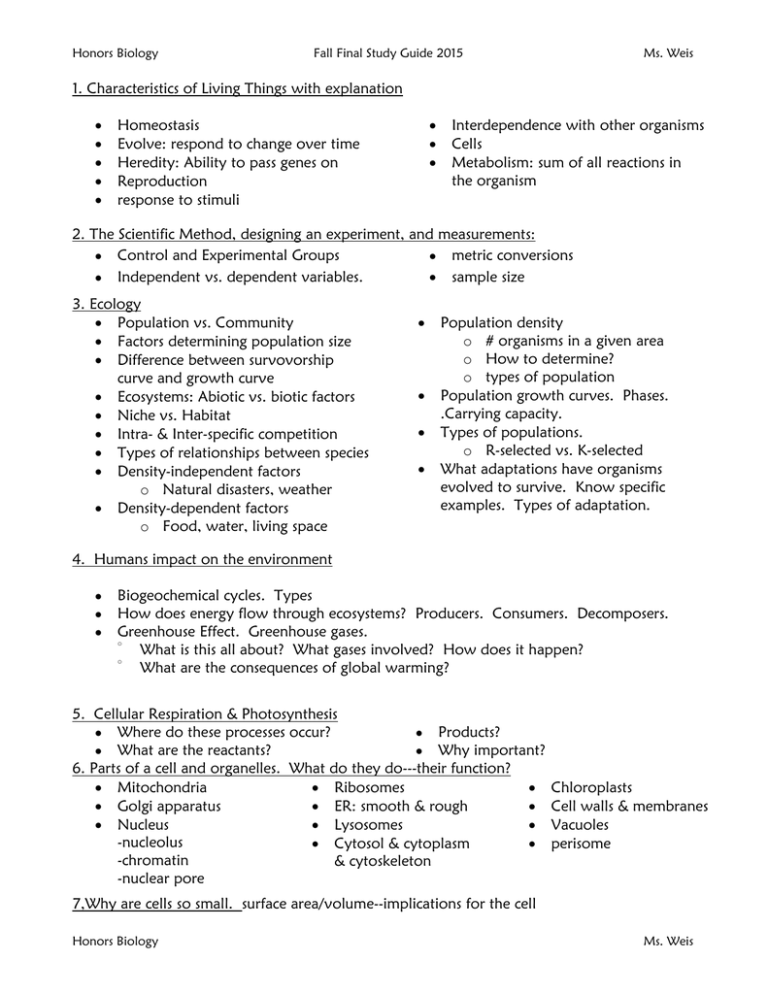
Honors Biology Fall Final Study Guide 2015 Ms. Weis 1. Characteristics of Living Things with explanation Homeostasis Evolve: respond to change over time Heredity: Ability to pass genes on Reproduction response to stimuli Interdependence with other organisms Cells Metabolism: sum of all reactions in the organism 2. The Scientific Method, designing an experiment, and measurements: Control and Experimental Groups metric conversions sample size Independent vs. dependent variables. 3. Ecology Population vs. Community Factors determining population size Difference between survovorship curve and growth curve Ecosystems: Abiotic vs. biotic factors Niche vs. Habitat Intra- & Inter-specific competition Types of relationships between species Density-independent factors o Natural disasters, weather Density-dependent factors o Food, water, living space Population density o # organisms in a given area o How to determine? o types of population Population growth curves. Phases. .Carrying capacity. Types of populations. o R-selected vs. K-selected What adaptations have organisms evolved to survive. Know specific examples. Types of adaptation. 4. Humans impact on the environment Biogeochemical cycles. Types How does energy flow through ecosystems? Producers. Consumers. Decomposers. Greenhouse Effect. Greenhouse gases. o What is this all about? What gases involved? How does it happen? o What are the consequences of global warming? 5. Cellular Respiration & Photosynthesis Where do these processes occur? Products? What are the reactants? Why important? 6. Parts of a cell and organelles. What do they do---their function? Mitochondria Ribosomes Golgi apparatus ER: smooth & rough Nucleus Lysosomes -nucleolus Cytosol & cytoplasm -chromatin & cytoskeleton -nuclear pore Chloroplasts Cell walls & membranes Vacuoles perisome 7,Why are cells so small. surface area/volume--implications for the cell Honors Biology Ms. Weis Biology 250 Fall Final Study Guide Lynne Weis 8.What happens in cells? Transport, in/out. What is moving? Protein Receptors/Channels Active vs. passive. ATP. Membranes: selectively permeable Homeostasis & metabolism Diffusion vs. Osmosis Cell Tonicity-- hypertonic, hypotonic, isotonic o Different solutions. What happens to cells exposed to the different solutions? What is a solution? Osmosis & Diffusion Lab What molecules moved? Why 9.Chemistry Why is water so special to living things Ionic and covalent bonding December 2011 Biology 250 Study Guide: Exam 2 Spring 2010 Kerry Zimmerman Monosaccharides vs. polysaccharides Why are cells small? What does this have to do with surface area and volume? 8. Chemistry Basics Organic vs. Inorganic -define/examples -major groups of organic molecules -Structure of atom -protons, neutrons, electrons how do you find them -valence electrons: why are they important molecules vs. compounds common elements in living organisms Bonds: types? what is stored in bonds? What are catalysts and enzymes? Biology 250 Study Guide: Exam 2 Spring 2010 Kerry Zimmerman



